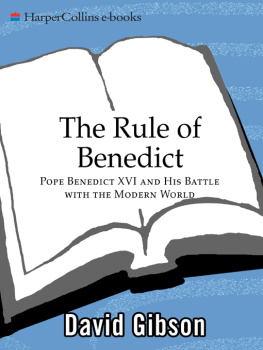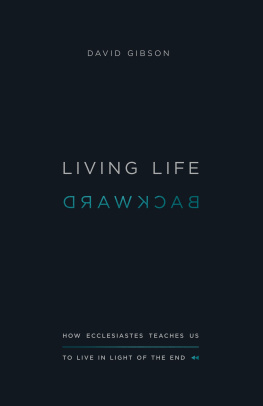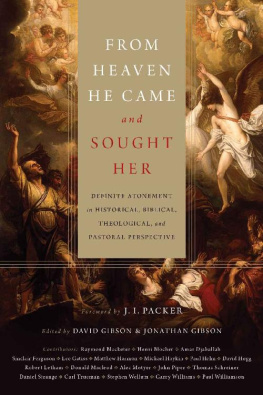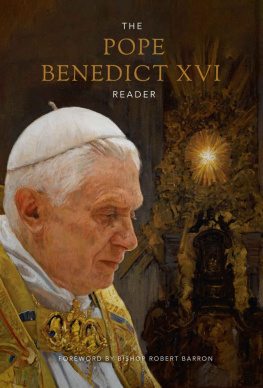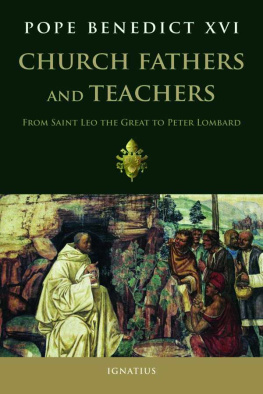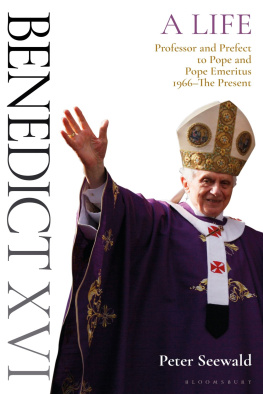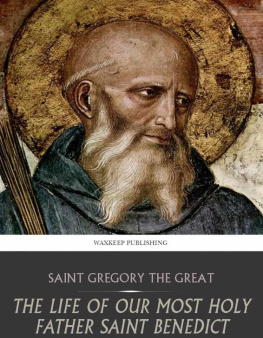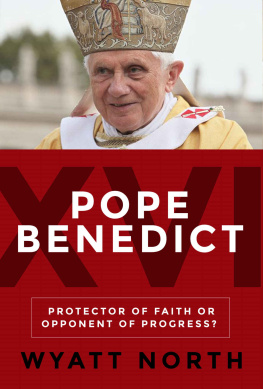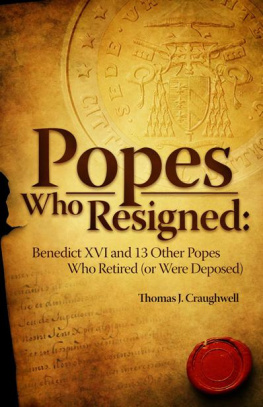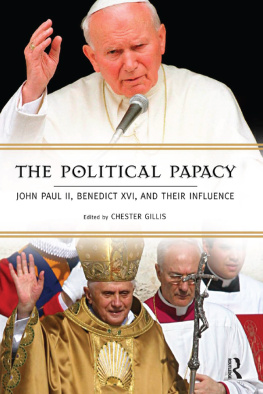T here may be nothing as supremely disorienting, or as profoundly emblematic of what it means to be a Catholic today, than the experience of standing in St. Peters Square waiting for the identity of a new pope to be revealed.
The sensation goes beyond the merely historic, which in these high-speed days can mean most anything that hasnt happened more than twice in the past week. Of course, History was an interested onlooker, along with the rest of us filling the huge oval piazza in the late afternoon of April 19, 2005. Just seventeen days earlier, Pope John Paul II had died after years of infirmity and a grim last-ditch struggle against a massive blood infection. The outcome was inevitable, and a long time coming. And yet the world was stunned by the passing of the aged hero. John Paul the Great, as he was being acclaimed even before his death, reigned as pope for more than twenty-six years, the third-longest pontificate in the two-thousand-year history of the papacy (Saint Peter himself comes in at number one), and it had been so long since the College of Cardinals had gathered to elect a successor that the whole exercise seemed like the first time it had ever happened. In fact, it was a first for most of the tens of millions of people watching the events transpire on television, for most of the thousands of journalistslike myselfon hand to cover the event, and, more to the point, for 113 of the 115 cardinals assembled in the strictest secrecy in the conclave inside the Sistine Chapel. So there was the plain strangeness of it all to contend with.
Beyond the unfamiliar, however, was the disconnect, bordering on the bizarro, of staring intently at a rustic stovepipe poking above the terra-cotta tile roof that covered the worlds most glorious frescoes and trying to figure out if smoke was really emanating from the chimney and, if so, whether it was black smoke or white, and then periodically checking those impressions against the glowing electronic version of the image on huge television monitors a few yards in front of our faces. Was there smoke or wasnt there? Was it white or was it black? This back-and-forth, squinting first at the stovepipesurprisingly small given its task of announcing the election of a new Roman pontiff to the worldand then at the Vaticans Jumbotron, seemed to embody the whipsaw of the ancient and the modern, the eternal and the evanescent, firm belief and pervasive doubt, that can provoke vertigo in the mind of a Catholic in the front end of the third millennium.
Central to the Catholic dilemma was the fact that the man who was to emerge on the balcony of the massive basilica in front of us would have an unparalleled authority over the religious lives of more than one billion Catholics across the globe, not to mention an audience with just about any world leader at just about any time he pleased. In an era in which authority and institutions are automatically suspect, a Supreme Pontiff with no real check on his power, chosen by a cadre of elderly celibate men behind closed doors, presents an imposing challenge to the conscience of Catholics. The puff of white smoke we were looking for would signal a selection affecting the lives of Catholics everywhere, and the course of the church itself, for years, even generations to come, and it would arrive at one of the most critical junctures in the churchs history. Dogged by scandal and controversy in North America, debilitated by religious indifference in Europe, booming in Africa, buckling to Protestant competition in Latin America, an overwhelmed minority in Asia, Catholicism was at a crossroads, and everyone in the piazza, everyone in the world, sensed it.
Yet even as the modern world was moving faster than ever, the Catholic Church was taking its own medieval time about choosing a leader to deal with that changing realitysomeone who could somehow reconnect the past and the future in the eternal present, as Saint Augustine described our condition.
What would the cardinals decide?
Anything was possible, and no one had a clue. Rarely had there been so many different issues pressing in on the church and the cardinals at one time, and rarely had there been so little consensus on at least a handful of front-runners. Commentators had speculated for months, spinning so many scenarios that Top 10 lists expanded into Top 20 and even Top 40 lists of papabile, as potential candidates are known, literally pope-able. News services took their best guesses and prepared dozens of extensive profiles of prospective popes. All but one would go in the trash as soon as the winner walked out. Then again, maybe none of the preselected would win, and wed all be starting from scratch. With no overt politicking and no reliable polling possible, and with the proceedings of the conclave cloaked by solemn oaths and an unprecedented electronic shroud of jamming devices, there was precious little intel to go on. The reality is that whether a single cardinal whispered musings to a reporter before the conclave began, or whether twenty did, or even forty, they all entered the locked room as free men, able to vote as they liked for the first, and perhaps only, time in their lives, for the man among them who would lead the Holy Roman Church.
To translate the moment into American political terms, imagine an entire marathon presidential campaign distilled into a single announcement, a split second when hundreds of millions of people with an enormous stake in the outcome suddenly find out the identity of their new leader. No primaries and no stump speeches, no boring conventions and scripted debates winnowing the field to a manageable pair of candidates, and no daily surveys, all of which serve to habituate the mind to one of two possibilities. With a conclave there was no real idea at all of what was happening, or why, or above all, who. The result is like an arranged marriage: Here is the person youll have to live with. Now fall in love.
With a papal election, there isnt even the fallback position of better luck next year. Popes do not serve for fixed terms, they do not have term limits, and they do not retire. Moreover, the steady advances in medical technology, especially in geriatrics, mean that the notion of a transitional papacy, once a favorite consolation for Catholics disappointed when the cardinals decided to choose an elderly caretaker pope, seems forever obsolete. Today even a seventy-five-year-old cardinaland there were plenty of them in the collegecould reign for fifteen or twenty years, though perhaps not terribly effectively. The length and breadth of John Pauls papacy conditioned us to many ideas, one of them being that the papacy was a lifetime jobour lifetime as much as the pontiffs.
In fact, the young adults around me in the square had never known a pope other than John Paul, and in a sense I hadnt either. I had converted to Catholicism some fifteen years earlier, at the ripe age of thirty, right around the corner from where I now stood, in the Chiesa di SantAnna, the small Baroque parish church of Vatican City. (St. Peters is not a parish church, except to the wider world perhaps, which is why a separate church was needed to serve the spiritual needs of the 2,500 or so employees and citizens of the 108-acre protectorate.) I had left the employ of the pope standing there in the piazza. I still meant John Paul II when I said the pope, as if the title were his alone and needed no elaborationa few days before my conversion, believing that the requirements of free will would be better met if I was not taking a paycheck from the man who ran the religion to which I was about to entrust the care of my soul.

